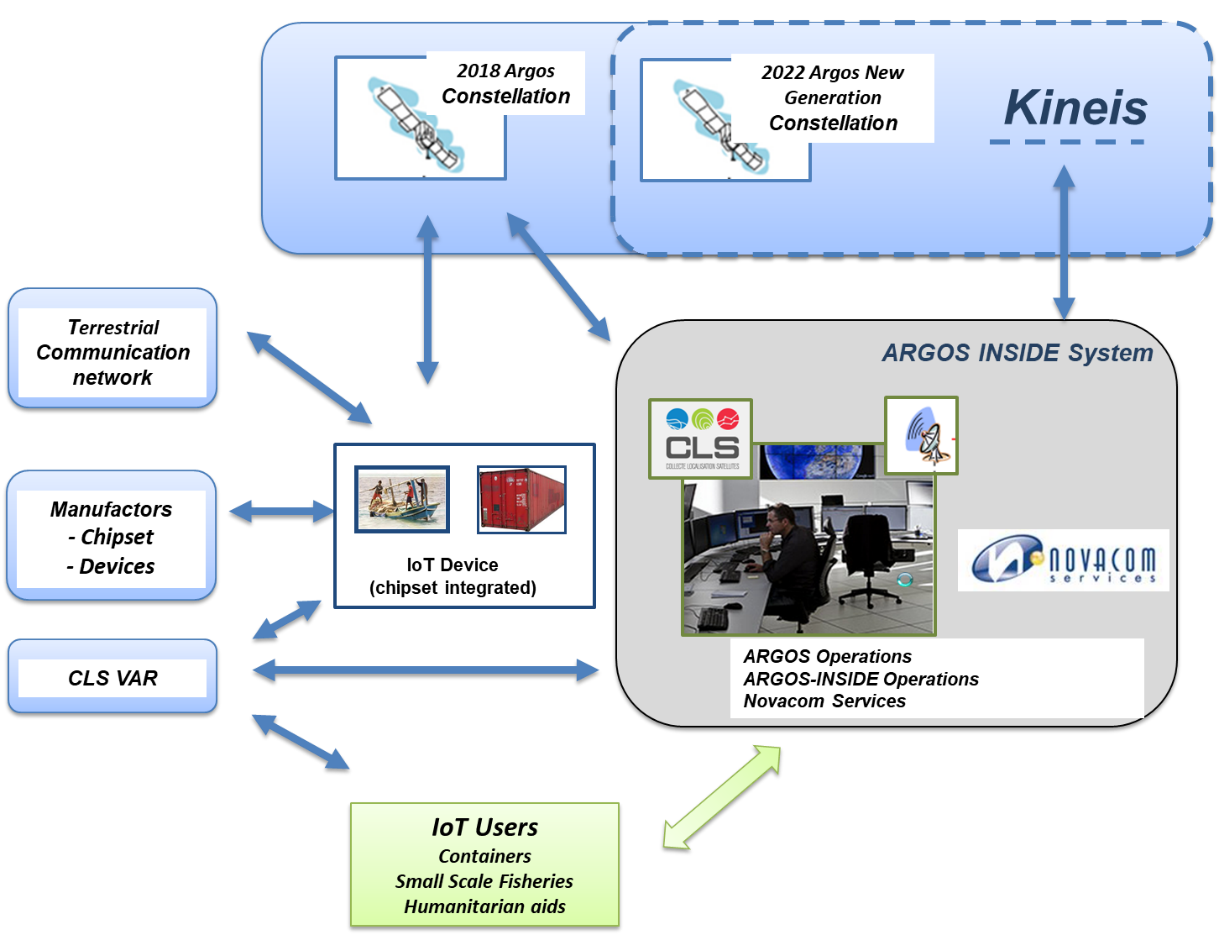
Objectives of the service
With ARGOS-INSIDE, the CLS business development aims to bring new perspectives to the 40 years old satellite based ARGOS system with the emergence of IoT and its forecasted rapid extension at a global scale.
Many applications need to be connected. However, none of the current system allow to provide global coverage and low prices. There is a real need of autonomous connectivity to follow large scale of assets that CLS is able to fulfil. The basement of such ambition will be the hybridization of a recently developed Argos chipset with terrestrial communication devices (GSM, Lora…) to fill the gaps on ground station coverage. The objective of a low cost and small size terminal is a sine qua none condition for the success of the future service. The Argos chipset will play a central role in this. The objectives also include the required evolution of the Argos business model.
Users and their needs
Three applications domains are targeted in particular in the study. They have been prioritized as they correspond to user needs expressed by CLS customers or contacts. They are listed hereafter:
- Artisanal fishing
- Equipment operation control
- Container shipping
Different user communities have been identified :
- Artisanal or traditional fishing: fishing authorities and fishermen
- Humanitarian aids: UN organizations
- Containers tracking: Maritime shipping company
Needs vary according to different use cases :
- Artisanal fishing
- Tracking
- SOS alert and acknowledgement of the SOS
- Transmission of weather alerts to the fishing vessels
- Geofencing
- Online user platform.
- Equipment operation control
- Tracking
- Alert upon outage (power supply off)
- Alert upon low fuel vevel
- Alert upon abnormally fast decrease of fuel level
- Container shipping
- Tracking
- Sensor data collection
- Detection of alerts
Gabon Authorities
Switzerland (humanitarian aids)
France/Belgium
Service/ system concept
Whatever, the domain of application (small scale fisheries, humanitarian aids or ship containers), as soon as a message form an hybrid terrestrial-satellite device is generated, the Argos Inside processing center process the data and without delay send the related information to the user. The service is 7/7 and 24/24 all around the World.

Space Added Value
The space assets considered in this feasibility study are as follows:
- The ARGOS legacy constellation of 7 satellites
- The Kineis satellite constellation, the extension of the present Argos global system low data rate message satellite constellation as a space base IoT complement to GSM or IoT mobile communication terrestrial systems
- The GNSS (Satellite Navigation) system that will provide the position of the device.
Note that ARGOS or Kineis also offers the capability to localize ground platforms based on Doppler effects. Such capability even if less accurate than the GNSS signal, may be useful as an alternative or for integrity check. However, it is not central in the scope of this study.
Current Status
The Feasibility study started in mid 2018 and has been completed in August 2019. The project management has been transferred from CLS to the newly found company Kineis in Spring 2019. A follow-up demonstration project is planned.
KINEIS has been completely funded in January 2020 thanks to a PPP fundraising of 100M€. The industrial consortium includes in particular THALES ALENIA SPACE and HEMERIA of France.



